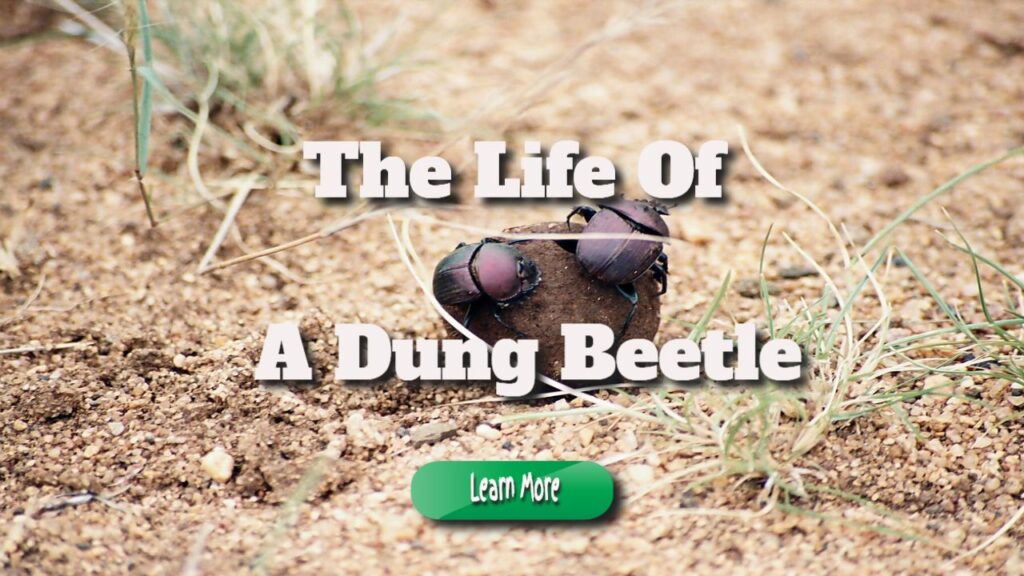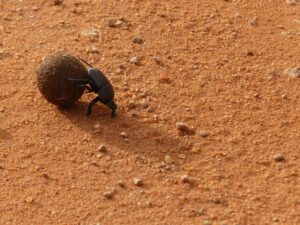Discover the Fascinating Lifecycle and Ecological Importance of Dung Beetles
The life cycle of dung beetles presents an astonishing journey that highlights their distinctive adaptations and behaviors. If you’ve ever experienced a summer safari in the breathtaking landscapes of South Africa, the experiences I share here will resonate profoundly with your memories. For those who have yet to explore this captivating destination, I strongly encourage you to schedule your adventure to Londolozi as soon as possible. Here, you will have the opportunity to witness the vibrant ecosystem and the remarkable biodiversity that thrives in this natural wonderland.
As the first significant rains descend upon Londolozi, the previously tranquil bush awakens into a dynamic symphony of life. The chorus of bird calls and the bustling activity of insects create an exhilarating atmosphere that heralds the arrival of summer. This is the moment when one of nature’s most thrilling spectacles occurs—the emergence of dung beetles, which play a crucial role in this ecological transformation and are integral to the health of their environment.
The shift in seasons becomes unmistakable when we come across a dung heap or a garbage dump, where the once-still piles of excrement suddenly spring to life with activity. This striking scene serves as a powerful reminder of the intricate web of life that flourishes around us, showcasing the resilience and dynamism of nature.
The sight of countless dung beetles energetically competing for their share of fresh dung is truly captivating. These remarkable scarabs demonstrate incredible endurance and determination as they tirelessly search for nourishment vital for their survival and the sustenance of their populations. Globally, there are over 7000 species of dung beetles, with approximately 780 species residing in southern Africa alone. Each species offers a unique contribution to the ecosystem, underscoring the vital importance of biodiversity.
Dung beetles exhibit a wide range of sizes and colors, which adds to their fascinating nature. They can vary from just a few millimeters in length, displaying a shiny green hue, to larger varieties measuring up to 5 cm, featuring a striking jet-black appearance. Their emergence coincides with the summer months, following the rains that soften the ground and facilitate their ability to bury their droppings—this is a crucial aspect of their lifecycle that supports their reproductive success.
The daily existence of a male dung beetle is nothing short of extraordinary. Each day, he embarks on a quest to locate fresh manure, demonstrating impressive navigation skills. These beetles can detect fresh dung almost immediately after it is deposited, utilizing a range of sensory cues from their animal hosts. Their acute sense of smell is critical for their survival and reproductive success, exemplifying the remarkable adaptations these insects have developed over generations.
Interestingly, dung beetles engage in a unique symbiotic relationship with microscopic house dust mites that inhabit their mouths. These tiny mites play an essential role in maintaining the cleanliness of the beetles by removing excess dung particles, ensuring that their exoskeletons remain unobstructed while they forage for food. This fascinating partnership highlights the interconnectedness of species within the ecosystem, showcasing how different organisms can mutually benefit from one another.
Dung beetles are categorized into four primary subgroups based on their behavior and dung management strategies. Endocoprids, often referred to as “dwellers,” thrive within dung piles, capitalizing on the rich nutrients available. Paracoprids, known as “tunnellers,” bury their dung directly beneath the pile, creating a food source for their larvae. Telecoprids, or “rollers,” are frequently observed rolling dung balls away from their original location for consumption and burial elsewhere. Lastly, kleptocoprids, the thieves of the dung beetle world, pilfer dung balls from telecoprids and lay their eggs within them, showcasing a fascinating aspect of their complex behavior.
When telecoprids encounter a dung pile, a flurry of activity ensues, reminiscent of the excitement found on a safari trip. These industrious beetles focus on rolling one of two types of dung balls: the wedding ball and the brood ball. The wedding ball is crafted by a male dung beetle to attract females; the size of this ball is crucial for impressing potential mates, as larger balls tend to be significantly more attractive.
Once a female beetle identifies a male with a suitable ball, she attaches herself to the side while he rolls it to a designated location or digs a hole for it. In contrast, the brood ball serves as a nursery for the larvae. The mother beetle lays a single egg within the brood ball, shaping it into a nearly pear-shaped form before burying it, thus ensuring the survival of the next generation in a safe environment.
As winter approaches, the outer layer of the brood ball hardens, effectively retaining moisture to support the developing larvae as they feast on the remnants of their nutrient-rich pantry. This remarkable adaptation is vital for their survival in varying environmental conditions, highlighting the resilience of these extraordinary insects.
In a single season, a female dung beetle can lay up to 60 eggs. Consequently, a male must roll an impressive number of brood balls to ensure the survival of his offspring. If you’ve ever observed a male beetle rolling a ball, you may have noticed that he occasionally pauses to look skyward. This behavior is not whimsical; it serves a practical purpose. Research indicates that these remarkable scarabs orient themselves using the sun’s rays during the day and navigate by the Milky Way at night, showcasing their exceptional spatial awareness and navigational skills.
Dung beetles are indispensable contributors to maintaining ecological balance, capable of burying over a tonne of manure per acre annually. Their activities play a significant role in nutrient recycling within the environment. By breaking down and recycling vast amounts of waste and plant excrement, they not only help manage insect populations by reducing potential breeding sites for flies but also assist in mitigating the accumulation of elephant dung. Elephants digest only about 44% of their food, leaving behind a wealth of nutrients that dung beetles recycle back into the soil, thereby enhancing the health of the entire ecosystem.
So, the next time you’re on a game drive and notice your Land Rover ranger maneuvering unexpectedly, it’s likely due to their careful navigation around these industrious insects, which are vital to the health and sustainability of the environment and the intricate ecosystem they inhabit.
The Article: Dung Beetle Life: Fascinating Insights and Facts Appeared First On Unity Pets.
The Article Dung Beetle Insights: Fascinating Facts About Their Life Was Found On https://limitsofstrategy.com

